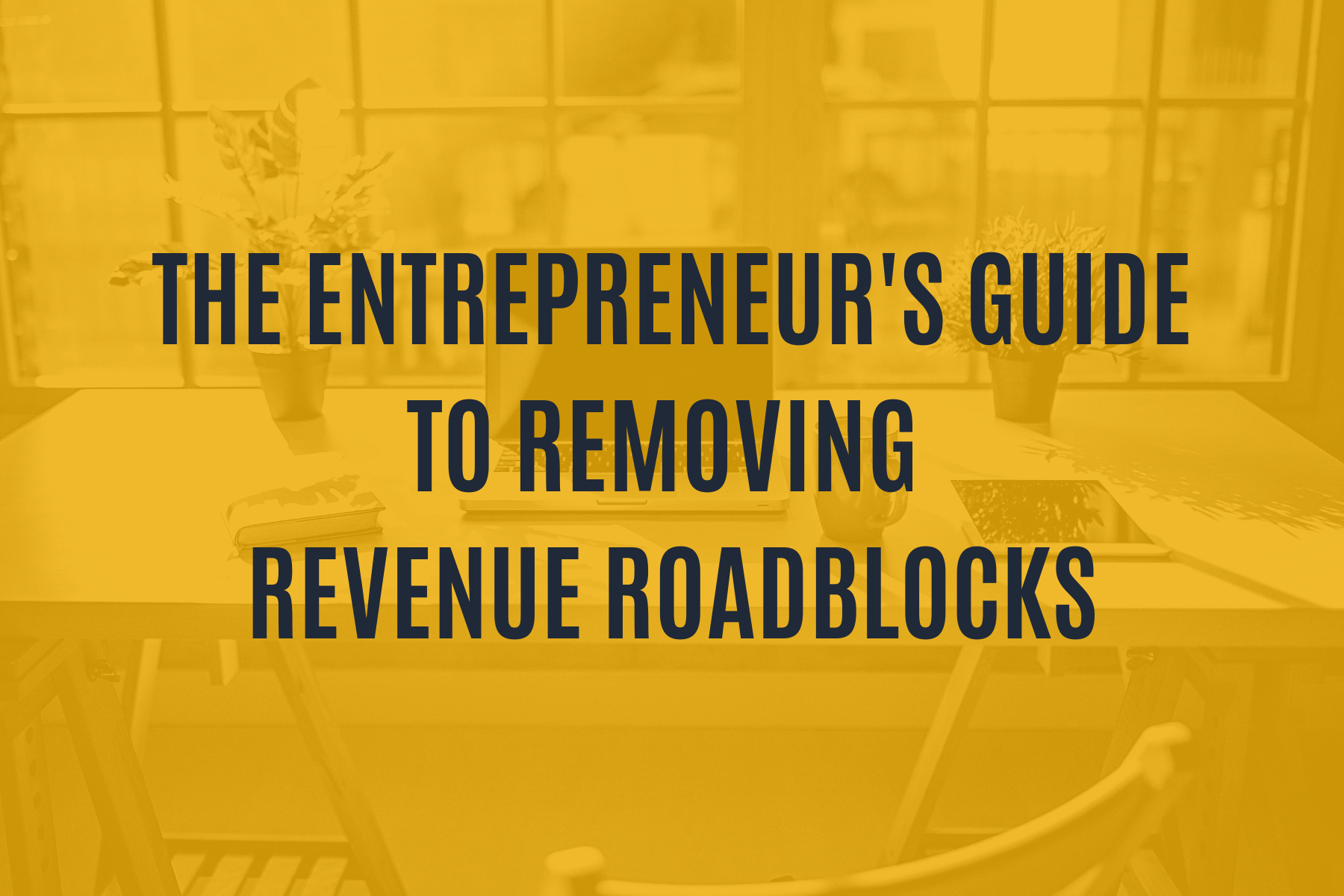
I was blown away by your response to the previous newsletter. And, in case you missed it, I shared three valuable lessons learned from speaking at a Berkshire Hathaway conference.
Based on your feedback I knew the message would resonate with other entrepreneurs so I retold the story during the latest episode of my podcast, Launch Your Business.
So, thanks for that and it is just another reminder of why it’s so important to tell your personal stories. Sure, sometimes it can be embarrassing, but it also allows others to learn from our experiences.
Along those lines, I’ve recently created a new guide that will help you learn from and avoid many of the challenges that I initially experienced as an entrepreneur.
It’s called the Revenue Optimization Checklist, a visual and tactical solution to help you identify and remove revenue roadblocks.
But it doesn’t just show you what you’re doing wrong, it also provides you with the tactic-level guidance needed to boost your brand and revenue.
I highly suggest that you block off 30 minutes to complete it this weekend so you’ll be able to hit the ground running on Monday.
Need help creating a plan to implement what you’ve learned? Consider using my approach by filling out your weekly goal-setting and accountability template. You can access it here and I’ll explain how it works now.
1. Create your bold statement of intent
This statement establishes your mindset and motivation to win the week. To be effective, your statement should both challenge and empower you to live in the vision you have for your personal and professional life.
Here’s an example.
“I’m going to finish what I start, accomplish more, and not cause any unnecessary stress as I make progress toward my goals.”
2. Define your big goals for the week
Now it’s time to start making big plans. But this is also an opportunity for you to avoid a common mistake; lack of focus.
You’ll do so by choosing three big goals for the week. That’s it. It will force you to focus on impact and you won’t feel overwhelmed by a never-ending to-do list.
These were my three goals for last week:
- Design a business development process to land more speaking engagements
- Create a new marketing funnel for my online courses
- Record and edit my podcast
3. Determine the action items needed to complete each goal
Once you have your goals established, it’s time to break each goal down by identifying the associated action items needed to complete them. This will give you a clear plan for success and make those larger goals feel less daunting.
I’ll use one of my goals as an example.
Goal:
Design a business development process to land more speaking engagements
Action items:
- Update speaking topics on website + add testimonials
- Create an email sequence to pitch event organizers
- Make a script for speaker reel
You’ll complete the same process as it applies to your goals and action items. Then, block off time on your calendar for each action item. This is crucial because it provides structure for your day and greatly increases your chances of success.
4. Identify what could stop you from hitting your goals
This may be one of the most important steps of the process. It’s easy to make big goals, but it’s the implementation of the associated actions that are actually going to move your business forward.
In this section, you’ll identify any issues or obstacles that could prevent you from completing these action items. This way, you’ll be able to proactively plan for and avoid roadblocks.
Here’s what I jotted down last week.
- Not blocking off time for my action items
- Taking on new projects or random meetings
- Getting distracted by other less important tasks
So, all I have to do is avoid those pitfalls and I’m good to go! You can get that same clarity and confidence by completing this exercise every week.
5. Evaluate your weekly process
You can’t manage what you don’t measure. So at the end of the week, you’re going to assign a numerical score in regard to how well you executed your plans across various categories.
You can see all the criteria on the sheet here are a few examples.
- Did I live my BOLD statement of intent?
- How well did I manage distractions?
- How was the quality of my work?
You’ll then rank yourself on a scale of 1 (poor) to 5 (crushed it). This will help you identify any challenges that need to be addressed and set you up for long-term success.
Bonus! Seek accountability
Ideally, your goals and evaluation would be reviewed by an accountability partner each week.
Why? According to the American Society of Training and Development, meeting with an accountability partner every week can increase your chances of accomplishing meaningful goals by 95 percent!
This accountability is so powerful that I’ve included it as a service for entrepreneurs who sign up for a Business Velocity Lab.
It helps my clients hit their goals and it helps me deliver on my promises. So, it’s a win-win for everyone involved.
If you need help finding one – other than me – I suggest asking other entrepreneurs in your network. They don’t need to be a coach or consultant, just someone who you can relate to and trust to hold you accountable for your actions.
Of course, you can also ask your friends or family, so long as it won’t cause issues with your relationships!
Next steps
Block off 30 minutes to complete the Revenue Optimization Checklist. Then, block off another 15 to complete my weekly goal-setting and accountability template.
And when you’re ready to plan your week, block off time on your calendar for each action item that must be completed to meet your three big goals.
That’s it for today.
I hope you found this valuable (please let me know) and if you did please consider sharing it with a friend. They can sign up here.
Have a great weekend!
Whenever you’re ready, there are 3 ways I can help you:
1. Learn how to start a professional service business using the skills you already have (Available now, money back guarantee)
2. Get quick answers to your most pressing questions (Booked out 1 week)
3. Work with me 1:1 to build your revenue and personal brand (Booked out 2 weeks)

